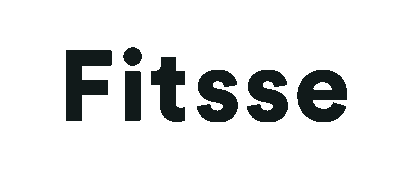Creating an effective meal plan to complement your workout regimen is crucial for maximizing results, whether your goal is to build muscle, lose fat, or improve endurance. This comprehensive guide will walk you through the steps necessary to design a meal plan that aligns with your fitness objectives, ensuring that your diet supports your training and recovery.
Step 1: Define Your Goals
Before you start planning your meals, it’s essential to define your fitness goals. Are you aiming to build muscle, lose fat, or improve endurance? Each goal requires a different nutritional approach:
- Muscle Building: Requires a caloric surplus, with a focus on protein intake to support muscle growth.
- Fat Loss: Requires a caloric deficit, while maintaining sufficient protein intake to preserve muscle mass.
- Endurance Improvement: Focuses on maintaining energy levels with a balanced intake of carbohydrates, proteins, and fats.
Step 2: Calculate Your Caloric Needs
To create an effective meal plan, you need to determine your daily caloric needs. This involves calculating your Basal Metabolic Rate (BMR) and then adjusting for your activity level:
- Calculate BMR: Use the Harris-Benedict equation:
- For men: BMR = 88.362 + (13.397 x weight in kg) + (4.799 x height in cm) – (5.677 x age in years)
- For women: BMR = 447.593 + (9.247 x weight in kg) + (3.098 x height in cm) – (4.330 x age in years)
- Adjust for Activity Level: Multiply your BMR by the appropriate activity factor:
- Sedentary (little or no exercise): BMR x 1.2
- Lightly active (light exercise/sports 1-3 days/week): BMR x 1.375
- Moderately active (moderate exercise/sports 3-5 days/week): BMR x 1.55
- Very active (hard exercise/sports 6-7 days a week): BMR x 1.725
- Super active (very hard exercise/sports & physical job): BMR x 1.9
Step 3: Determine Your Macronutrient Breakdown
The three primary macronutrients—proteins, carbohydrates, and fats—play distinct roles in your body. Your intake of these nutrients should be tailored to your specific fitness goals.
Protein
Proteins are essential for repairing and building muscle tissues after strenuous workouts. Aim for 1.2 to 2.2 grams of protein per kilogram of body weight, depending on your activity level and goals. Sources include lean meats, fish, eggs, dairy products, legumes, nuts, and seeds.
Carbohydrates
Carbohydrates are the primary energy source for your body, especially for high-intensity workouts. Aim for 3 to 7 grams of carbohydrates per kilogram of body weight, depending on the intensity and duration of your workouts. Sources include whole grains, fruits, vegetables, legumes, and starchy vegetables.
Fats
Fats are essential for hormone production, nutrient absorption, and overall health. They should constitute about 20-35% of your total daily caloric intake. Sources include avocados, nuts, seeds, olive oil, coconut oil, fatty fish, and full-fat dairy.
Step 4: Plan Your Meals and Snacks
Proper meal timing can enhance your workout performance and recovery. Plan your meals and snacks around your workouts to maximize their benefits.
Pre-Workout Nutrition
A well-balanced pre-workout meal can significantly impact your performance. Aim to eat 2-3 hours before your workout to allow for digestion. Include a mix of carbohydrates and protein with some healthy fats. Examples include:
- Grilled chicken with brown rice and vegetables
- Oatmeal with berries and a scoop of protein powder
- Whole-grain sandwich with lean turkey and avocado
If you’re short on time, a smaller snack 30-60 minutes before your workout can also help. Include simple carbohydrates and some protein. Examples include:
- A banana with peanut butter
- A protein shake
- Yogurt with granola
Post-Workout Nutrition
The post-workout window is critical for recovery and muscle growth. Consuming a meal within 2 hours of your workout helps replenish glycogen stores and repair muscle tissues. Include high-quality protein and carbohydrates. Examples include:
- A protein shake with a banana
- Grilled salmon with sweet potatoes
- Turkey sandwich on whole-grain bread
Sample Meal Plans
Below are sample meal plans tailored to different fitness goals. Adjust portions based on your individual caloric needs.
Muscle Building Meal Plan
Breakfast:
- Scrambled eggs (3 eggs) with spinach and tomatoes
- Whole-grain toast with avocado
- A glass of milk
Mid-Morning Snack:
- Greek yogurt with honey and mixed berries
Lunch:
- Grilled chicken breast
- Quinoa salad with chickpeas, cucumbers, and feta
- Steamed broccoli
Afternoon Snack:
- Hummus with carrot and celery sticks
Dinner:
- Baked salmon
- Brown rice
- Asparagus and mixed greens salad with olive oil dressing
Evening Snack:
- Cottage cheese with pineapple chunks
Fat Loss Meal Plan
Breakfast:
- Overnight oats with almond milk, chia seeds, and sliced banana
Mid-Morning Snack:
- An apple with a handful of almonds
Lunch:
- Grilled turkey breast
- Mixed green salad with cherry tomatoes, cucumbers, and a balsamic vinaigrette
- Steamed cauliflower
Afternoon Snack:
- A small smoothie with spinach, protein powder, and mixed berries
Dinner:
- Grilled shrimp
- Zucchini noodles with marinara sauce
- A side of steamed carrots
Evening Snack:
- A handful of baby carrots with a tablespoon of hummus
Endurance Improvement Meal Plan
Breakfast:
- Oatmeal with sliced almonds, chia seeds, and honey
- A piece of fruit (apple or orange)
Mid-Morning Snack:
- A protein bar with a piece of fruit
Lunch:
- Whole-grain pasta with grilled chicken, pesto sauce, and mixed vegetables
- A side of mixed greens
Afternoon Snack:
- A smoothie with spinach, banana, protein powder, and almond milk
Dinner:
- Grilled lean steak
- Sweet potatoes
- Steamed green beans and a side salad with a light vinaigrette
Evening Snack:
- Greek yogurt with a drizzle of honey and a sprinkle of granola
Step 5: Hydration
Staying hydrated is vital for peak performance and recovery. Water regulates your body temperature, lubricates your joints, and transports nutrients to give you energy and keep you healthy. Aim for at least 3 liters of water per day, more if you’re sweating heavily during workouts. During prolonged or intense workouts, consider beverages that replenish electrolytes lost through sweat.
Step 6: Monitor and Adjust
Your meal plan should be dynamic and adaptable. Regularly monitor your progress and adjust your diet based on your results and how you feel. Key factors to consider include:
- Energy Levels: Ensure your diet provides enough energy for your workouts and daily activities.
- Recovery: If you’re experiencing prolonged soreness or fatigue, you may need to adjust your nutrient intake, especially protein and carbohydrates.
- Body Composition: Track changes in muscle mass and fat levels to ensure you’re moving towards your goals.
Conclusion
Creating a meal plan to maximize your workout results involves understanding your goals, calculating your caloric needs, balancing macronutrients, timing your meals correctly, staying hydrated, and regularly monitoring and adjusting your plan. By following these steps, you can optimize your diet to support your fitness journey. Remember, consistency and adaptability are key—listen to your body, adjust as needed, and stay committed to your nutrition plan to achieve the best possible results.
Step 7: Consider Supplements
While a balanced diet should be your primary source of nutrients, supplements can help fill gaps and enhance performance. Protein powders, branched-chain amino acids (BCAAs), creatine, and omega-3 fatty acids are popular options that may support muscle growth, recovery, and overall health. Consult with a healthcare professional before adding supplements to your regimen.
Step 8: Embrace Variety
Incorporating a wide range of foods in your meal plan not only prevents dietary boredom but also ensures a broader spectrum of nutrients. Experiment with different recipes and cuisines to keep your meals exciting and nutritionally diverse.
Latest Trends in Nutrition
As of 2023, personalized nutrition is gaining traction, with more people using genetic testing and wearable technology to tailor their diets to their unique biological needs. Additionally, plant-based diets continue to rise in popularity, with a focus on sustainability and health benefits.








This guide offers a well-structured approach to aligning your nutrition with your fitness goals. By defining your goals, calculating your caloric needs, and tailoring your macronutrient intake, you can effectively support your training and recovery. It’s great to see such a comprehensive plan that emphasizes the importance of meal timing, hydration, and regular adjustments based on personal progress. Keep up the focus on consistency and adaptability!